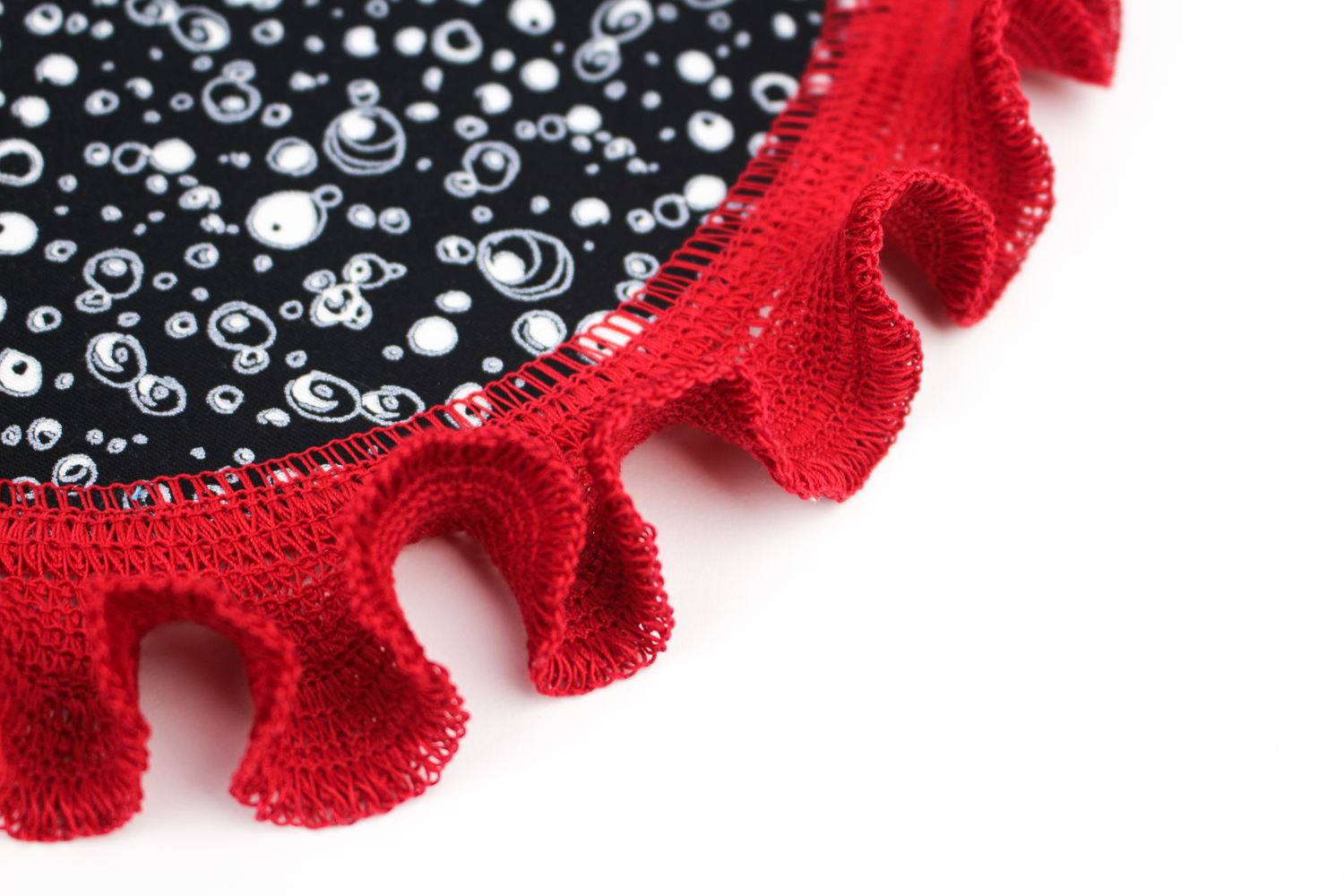Making Serger Lace Tutorial
WonderFil Specialty Threads
If you love the look of lace but don't have the time or patience to painstakingly craft bobbin lace by hand, we have a fast and beautiful solution that only requires a serger and your favourite mid-heavy weight WonderFil™ thread.
Materials:
- a 4 thread serger
- 3 spools of Konfetti™ 50wt cotton or 12wt Spagetti™ cotton (we recommend heavier weight thread as it tends to look better).
* These WonderFil™ cotton threads are the ideal choice as they are extremely low on lint, meaning your serger will stay much cleaner.
image 1
image 2
1. Thread the serger with your thread. It is very important with sergers to put threads in the right order. Use the instruction guide on the machine or have your instruction book out as not all sergers thread the same.
2. Set up the serger for a 3 thread wide overlock stitch. We are going to use our left needle and both loopers. Make the cutting width as wide as possible.
image 3
3. Turn your hand wheel for a couple of stitches into a chain. When you are starting off, one thing that you want to decide is if you want to sew along the raw edge, or you want to fold your fabric up, and do your first row of serging this way. This is the first row (image 3).
image 4
4. For the second row, some people like to lower their upper blade on their serger to do serger lace, but we prefer not to (but that is a decision a sewer can make). On the presser foot there are two markings: one marking for the left needle position, another marking is for the right needle position. Guide the edge of the fabric along the edge of the right needle position and that is the mark we are going to use. Stitch down the entire edge in the new position so you end up with another row of serging (image 4).
image 5
5. When you have completed your second row of stitching, you will repeat step 4 about 5 more times, creating new rows of stitching over the last. This isn’t a technique where you want to sew really fast because you want to make sure that you're catching the previous row of your stitching (otherwise you will end up with holes in your lace). If you find it falling out of position, simply raise the foot and reposition the fabric.
image 6
image 7
6. After 5 rows, do a couple of rows with a shortened stitch length, from length 3 to 2 (image 6 & 7).
image 8
7. After a few more rows, shorten the stitch length again to 2 or 1 (making stitches even closer together). Create a few more rows until you start to get the wave look (image 8).
10. Your serger lace is now complete!
* When sewing serger lace on a curve or circle, be more gentle when turning the fabric. We recommend having a fabric piece bigger than an 8 inch circle because a smaller circle will make it harder for the serger. Otherwise, all the steps will be exactly the same.


